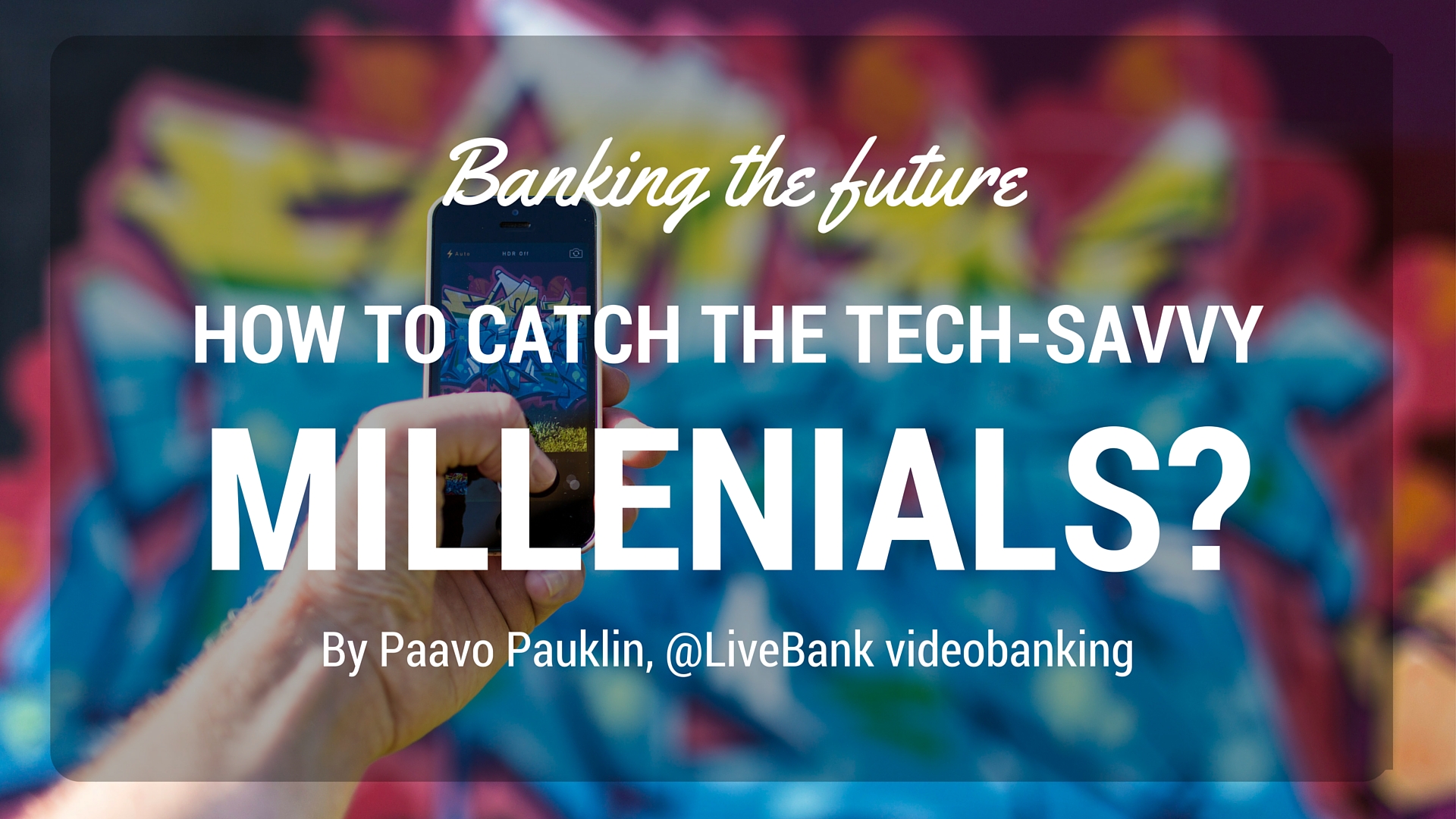
05 Apr Banking the Future: How to catch the tech-savvy Millennials?
The attention span of a regular today’s youngster is only 8 seconds, which is one second less than of a goldfish. They can quickly use their brain to find diamonds from the noise, but also, leave non-interesting, unvisualized and boring information to die in the background. To win the trust of the youth, it is essential to approach them from a visual and humane level, considering their financial literacy, needs and issues.
For today, as the 21st century has existed over a decade, the new era of information and technology has planted its roots firmly in our society. It has become a usual daily matter to which we don’t even bother to pay attention anymore. The problems that come and go within this new smart era are obvious and normal parts of our society. The opulence of information has led us to where the demand for comfort in different products and services is high and it’s prevailing mostly amongst the younger generation. The generation born and raised with the mentality of the Information Age.
The Information Age can be described with the acceleration of processes, which therefore demands a more innovative approach to different conditions of comfort. Compared to older technology, we now have smartphones and tablets that provide us the opportunity to multitask, saving people time, money and energy. In the Information Age, everything is constantly changing and people are coming up with more innovative and more comfortable ways to live a busy life.
It is important that not only the supportive devices and products but also the services should meet the needs and demands of a modern person. That is why the traditional and well-functioning services are threatened and mostly too bureaucratic and exceedingly traditional concepts are fading. Due to that fact, alternative ways of providing different services has become more and more popular. For example, Uber, AirBnb, and even Tinder have vastly gained popularity with the easy and comfortable approach to the traditional service.
Youths are much more sophisticated media consumers
Youths, naming no specific age range, are the segment of society who are the most demanding, expecting comfort and simplicity everywhere. Using smartphones and apps 24/7, the “youth” are used to the immediate contact with the products, people, and the services. Unfortunately, that lack of urgency and comfort has put the normal pre-planned face-to-face meetings on the back burner. Youth can be attracted only by supreme simplicity and innovative front-ends.
According to the study by Statistic Brain Institute, the attention span of a regular youngster today is only 8 seconds, which is one second less than a goldfish. And it has reduced almost 4 seconds during last 5 years. We can freely assume from that number, that the youth has developed a brutal skill of multitasking (or switching between tasks) and rapidly discarding non-interesting information. They can quickly use their brain to find diamonds from the noise, but also, leave non-interesting, unvisualized and boring information to die in that background noise.

Banks need help to approach future clients
With the growth of demand in comfort and the valuing of more innovative approaches, it is important for the banks to win the complete trust and attention of the “youth”. As the banks are traditional institutions, they can have an innovative image, the choice for the youth still depends mostly on the quality and innovation of its services.
For financial errands, youths mainly count themselves as beginners – they value simple and humane attitudes from specific institutions such as banks. It’s common to think among the youngsters that banks are somehow on a higher level and partly unavailable for them. They think that financial literacy and knowledge about banking are essential to have a serious relationship with the bank.
To overcome these biases, it’s important to bring the relationship between the client and the bank on a more humane and direct level. Referring to the previously mentioned alternatives of service suppliers, interactive on-demand video banking is the solution for banks. On the condition of meeting the needs of youngsters from the aspects of innovation, comfort and simplicity, it brings the services only a few clicks away from the customer. This abolishes the fear of going to the bank and brings the bank nearer to the future customer.
To win the trust of the youth, it is essential to approach them from a humane level, considering their financial literacy, needs, and issues. On-demand Video banking is an option, which is always available, no matter what they want to know about their financial situation. The goal is to enthuse them to be in a better contact with their bank, losing the negative image of the bank as an institution out of reach.
Written by Paavo Pauklin, FinTech expert @ LiveBank video banking software
@paavopauklin
and Johanna Mertsina




No Comments